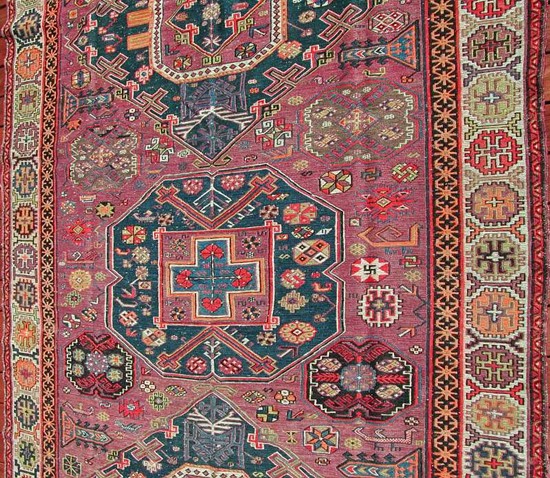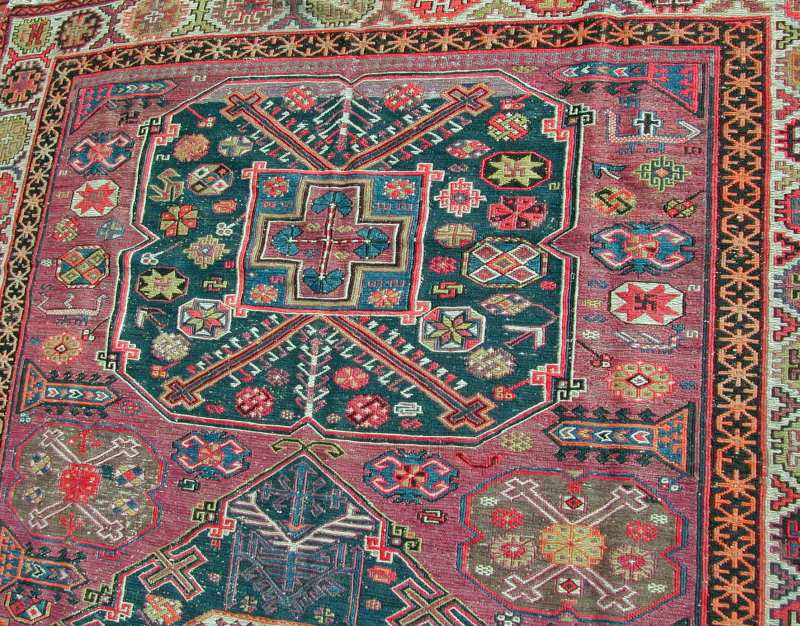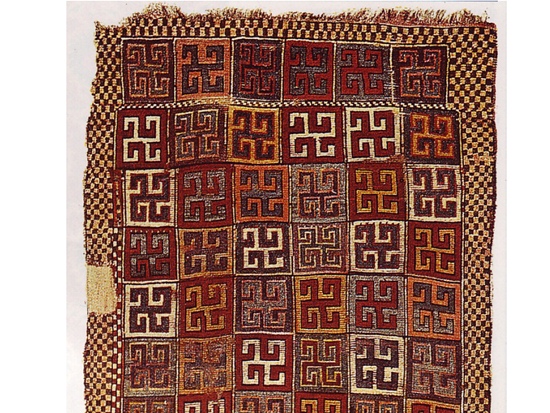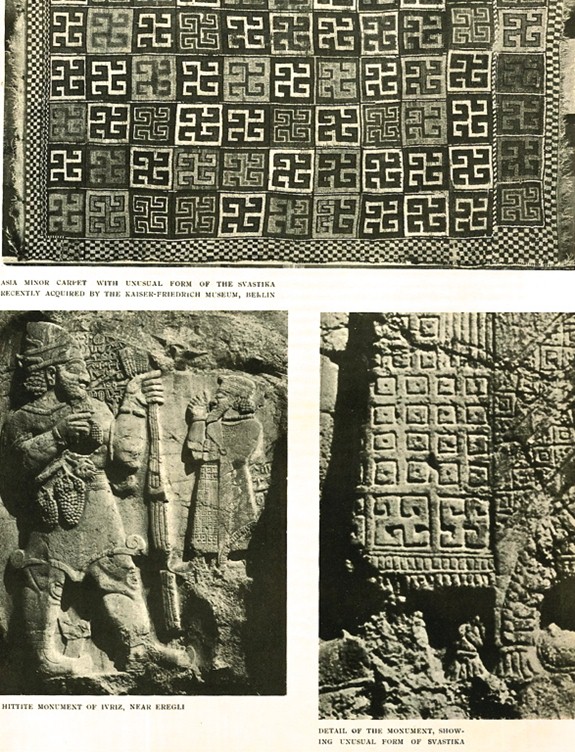|
|
|
|
#1 |
|
Administrator
Join Date: May 2008
Posts: 163
|
Hi all,
There are several implementations of crosses in this Azerbaijani soumak, and the placing of some make me wonder if they are intended to be rather more than simple geometric decoration. In particular, the crosses in the upper and lower medallions seem thoroughly planned - they are not just coincidental fallout of negative space edges. Indeed, such weavings require so much more effort and planning than a pile rug that I think almost nothing is fortuitous. And the crosses in the center medallion are far more asymmettrical than is necessary and I am inclined to see a more religious interpretation intended by the weaver:  BTW, my current plan is to ignore all the comments about lousy dyes....  Regards Chuck Wagner |
|
|

|
|
|
#2 |
|
Administrator
Join Date: May 2008
Location: Cyprus
Posts: 194
|
Hi Chuk,
Actually your soumak doesn't look bad at all on my monitor, apart perhaps some hot reds. Around WW2, it seems, complete with swastika. Woven for an SS official?  Regards, Filiberto |
|
|

|
|
|
#3 |
|
Members
Join Date: Oct 2009
Posts: 153
|
Hi Chuck,
That's a rather ecumenical sumak, featuring an amazing number of different motifs, including a swastika which rather hints at fire worshipers than at good Christians. But you are right, there are many simple crosses and, yes , they seem planned. The weaver was perhaps a crypto-Christian.  Dyes? No Sir, I was not mentioning any dye.  , Not me. , Not me. Pierre |
|
|

|
|
|
#4 |
|
Administrator
Join Date: May 2008
Posts: 163
|
Hi again,
Yes, well, I noticed that particular swastika as soon as I looked at this thing - can't really miss the shape + color combination. Still, upon a more thorough exam, we see several others including some with the direction of the device reversed which are all on the left side of the piece. There's one at the upper left outside the medallion, and another inside the star just below - but rendered in purple, so difficult to see in this image But, back to the point, observe the cross atop the creature to the upper right of the medallion - rather obviously proportioned, say I. Not unlike the one in Filiberto's Memling gul, which conveniently happened to manifest itself as the weaver compensated for design proportions (at least, that's her story and she's sticking to it...). There's another swastika - blue - above the creature as well, that rotates clockwise:  The absoultely spontaneous - large - assemblage of totemics on this thing made it easy for me to look past the hot red (and faded hot orange, BTW) and buy it. Regards Chuck Wagner |
|
|

|
|
|
#5 |
|
Members
Join Date: Oct 2009
Posts: 153
|
Hi all,
The rug below, described by Sarre early 1900’s (but lost during a bombing of the Berlin Museum in 1945), features the same kind of chessboard border than the rug in FIG 3 and in the painting by the Master of Schottenaltar. Its age cannot be known precisely ( C14 analysis was not available, back in 1945), but 15th or 16th century are possibilities.  The fied motif is interesting too. Sarre noted that the (seldom but not unique) motif was identical to a motif bordering the robe of a Hittite ruler (?) kneeling in front of his deity(?) on an Anatolian monument. The motif is also reminiscent of the (ubiquitous) swastika but this could be a mere coincidence.  IMHO the motif is unlikely to have perdured in Anatolian folk art during nearly three millenaries. One must rather suppose that a few local weavers took notice of it and found it nice. Best regards Pierre |
|
|

|
|
|
#6 |
|
Administrator
Join Date: May 2008
Location: Cyprus
Posts: 194
|
Absolutely! Nice find

|
|
|

|
|
|
#7 |
|
Registered
Join Date: Nov 2017
Posts: 1
|
Wow, some lovely collection, I am looking for such rugs in Australia but still unable to find out!
__________________
Buy Rug Culture rugs online in Australia @ 50% OFF SALE |
|
|

|
 |
|
|